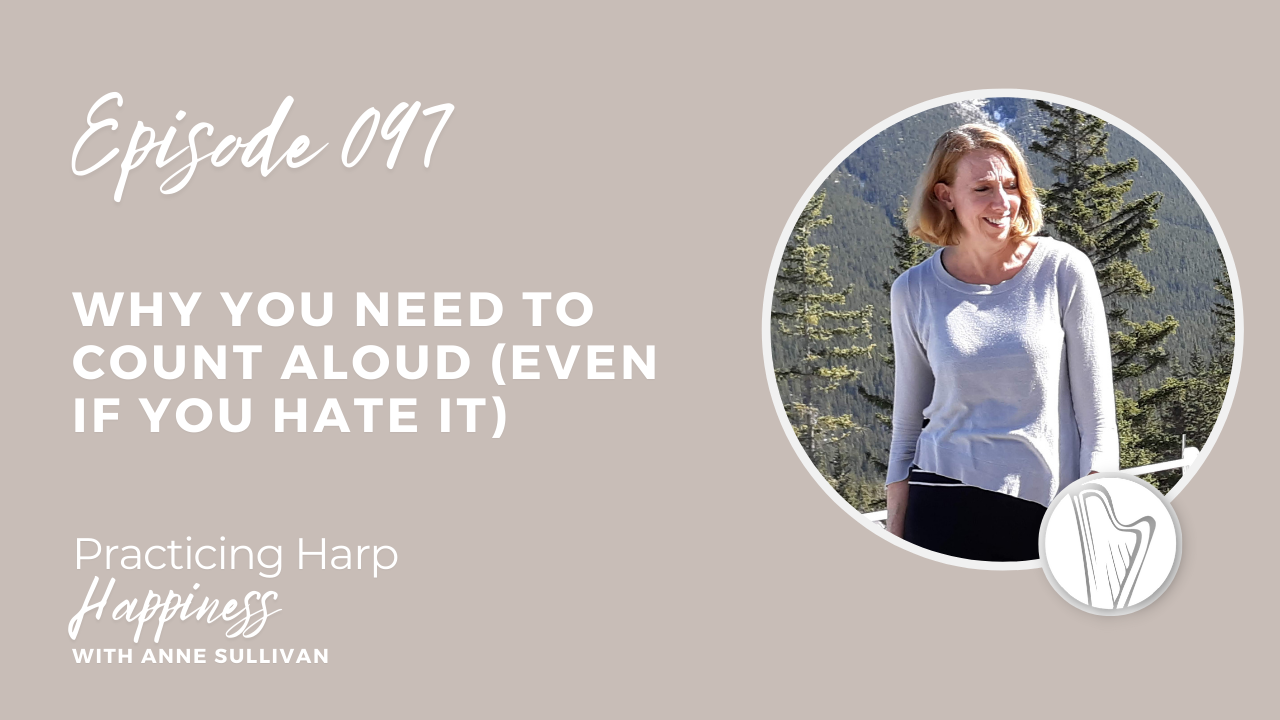#097: Why You Need To Count Aloud (Even If You Hate It)

Music is not a numbers game. You can’t quantify a moving performance or a composition with statistics like a batting average. You can’t predict how many minutes, hours, weeks or months it will take to be able to play a certain piece fluently. A player's skill isn’t solely a result of how old they are or how many years they’ve been playing. Those kinds of numbers aren’t relevant in the music world.
There are numbers that have great significance to us as musicians and harpists. Some are meaningful dates in music history, like the birth and death dates of important composers. Some numbers are important for what they represent. I’m thinking of the Roman numerals we use to describe chords and chord progressions, like a I-IV-V-I progression. Other numbers are even more practical, such as numbers for fingering. And then there are those numbers that are at the heart of our discussion today, the numbers in the time signature.
You know the numbers I mean; the numbers that look like fractions (but aren’t) at the beginning of nearly every piece, and sometimes in the middle. We call them the time signature or more technically, the meter signature, and although they are vitally important to our understanding of a piece, they are frequently overlooked. It’s not exactly that we don’t notice them or understand them. It’s simply that we discount their significance. That’s a hazardous habit.
The meter signature is our key to the organization and underlying rhythmic structure of the piece. It allows us as we learn a piece to put meaning into the notes, and our understanding of the meter allows a listener to make sense of the piece as they hear it. It’s the single most important factor in creating musical flow.
There’s a simple way to develop mastery of the meter signature. It’s likely that you do this already, but perhaps without the level of intention that I want to share with you today. Or perhaps you avoid this completely, either because it seems too difficult or you don’t see the point. If that’s the case for you, I’m hoping to change your mind today. And I’m bringing out my most persuasive ideas because I think I may have an uphill battle ahead of me. Why? Because I want you to count aloud.
Yep. I heard you groan from here. Yes, those groans travel through the air waves, my friend. I understand. As a young student, I hated counting aloud and thought it was a special form of torture my teacher had devised specially for me. But my attitude changed completely as I became a more mature musician, and I’d love to help change your attitude about counting aloud too.
If you’re already convinced, that’s great. Stick with me, though, because I have some why’s, how’s and wherefore’s that will take your counting to the next level. If you’re a counting skeptic, stick with me too, because I want to try to change your mind and your music.
Links to things I think you might be interested in that were mentioned in the podcast episode:
- Join the Live Podcast Taping on April 11
- Related resource Three Things Your Metronome Can’t Do For You blog post
- Harpmastery.com
Get involved in the show! Send your questions and suggestions for future podcast episodes to me at [email protected]

